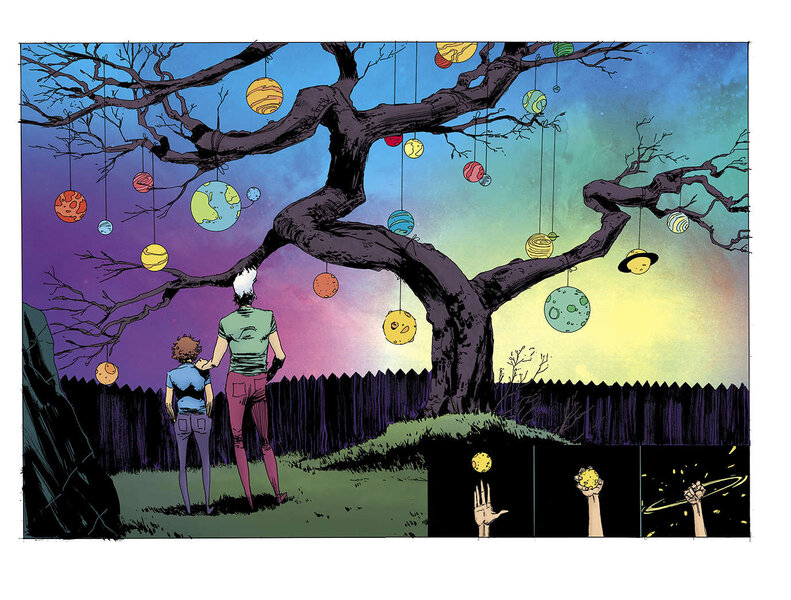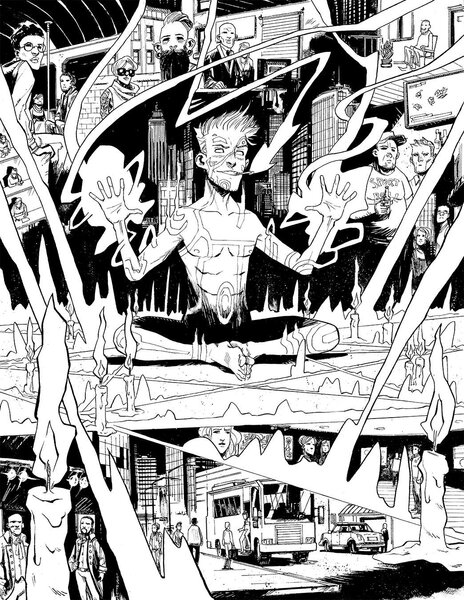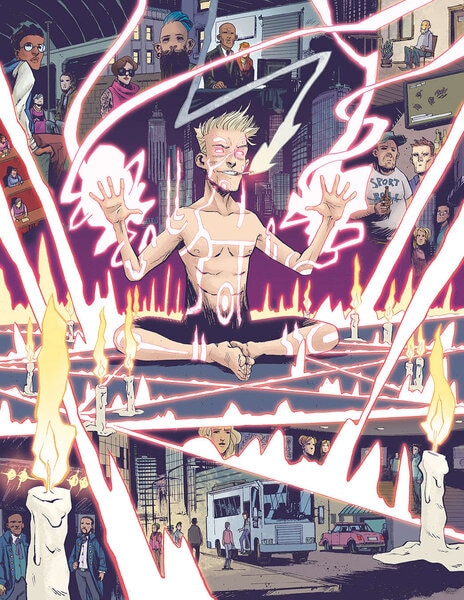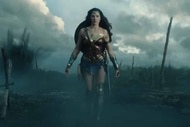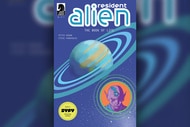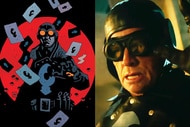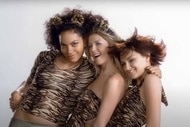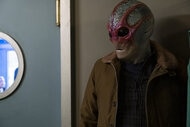Create a free profile to get unlimited access to exclusive videos, sweepstakes, and more!
Comics Jobs: The crucial role a colorist plays in the creation of a comic
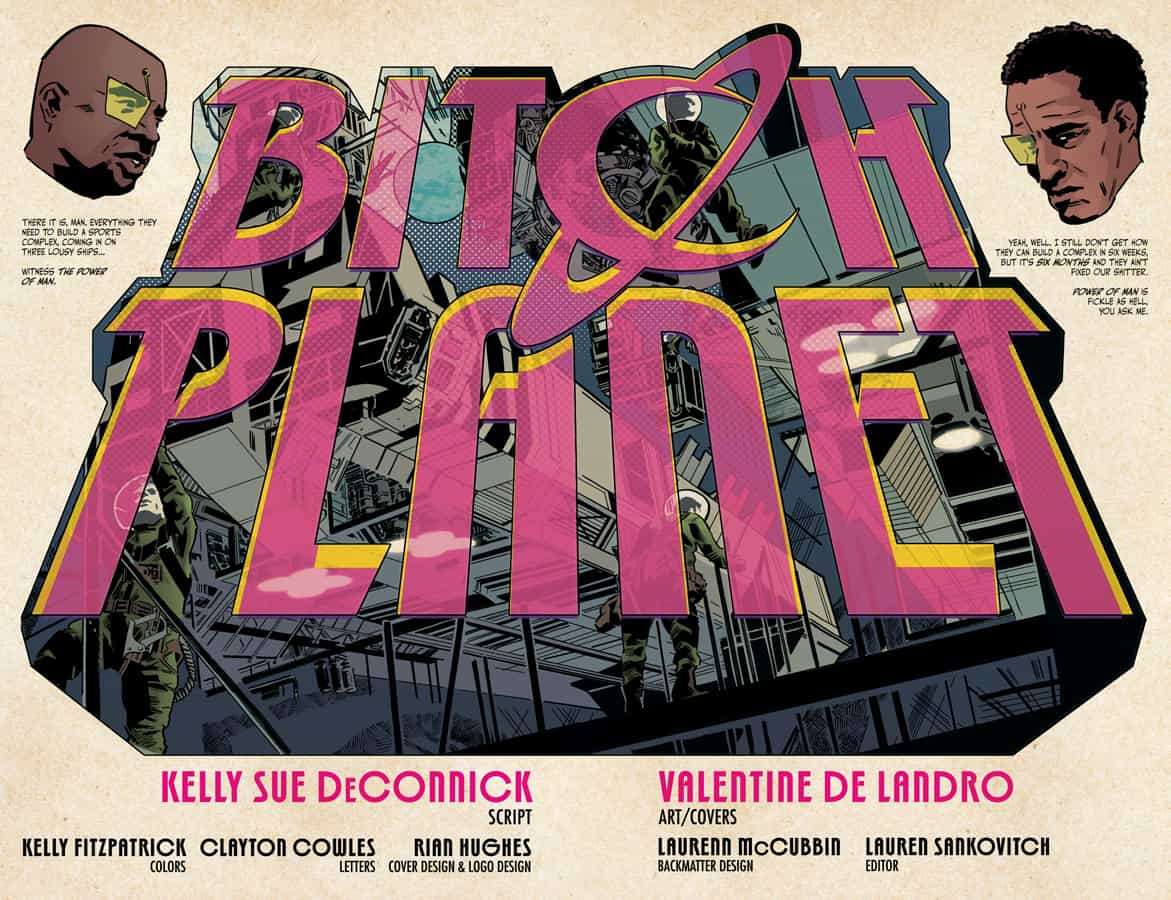
Making comic books is a team game.
But just as an NFL quarterback can't succeed without his offensive line, writers and artists rely on other comics professionals to do their part in creating graphic arts magic. Each job is essential in its own right. And just like the guys who do the dirty work in the trenches on Sunday to protect the QB, sometimes the other folks in the comic book creation process get taken for granted.
I've certainly made that mistake. During last week's column, I asked readers if they collected the character or the creator. I shared examples of writers and artists I followed during my formative geek years, with an emphasis on the writers. What can I say? We all have our leans and subconscious biases, and I've always gravitated toward the writer in the comics process. Colorist Kelly Fitzpatrick gently but rightly called me out for focusing more on the writer rather than the artist in my piece, and it got me thinking: Who else gets overlooked when we talk about great comics and the people who make them? Easy.
The inker. The colorist. The letterer. All key elements in the production process, yet many times don't even draw a mention in reviews of books. I'm as guilty of that as anyone, so I thought a good way to rectify that is to use this column to shine a little light on those who sometimes toil in creative anonymity. I asked Fitzpatrick, a Hugo- and Harvey-nominated creator for her work on titles such as Bitch Planet, Shade, the Changing Girl, and Supergirl: Being Super, to answer a few questions about the work a colorist does. The colors are essential to adding dimensionality to comic art. Without the talents of artists like Fitzpatrick, the full impact of the artwork of a story wouldn't be felt. In other words, it's essential to the creative process.
I hope you enjoy the exchange, and if there are other comics pros you would like me to talk to about their process, feel free to let me know. Enjoy!
You pointed out something in my column that I subconsciously do at times ... which is overlook some of the other key contributors to the making of a comic book. Do you think colorists and the job they do are taken for granted somewhat?
Kelly Fitzpatrick: Yeah! Totally! Oftentimes it's media or company PR that overlooks it or doesn't think it's important or sells books. Internally, the creators I have worked with have always been supportive and push for me to get acknowledged for the work I've done. There's even creators like Marc Laming who #FF me on Twitter EVERY Friday, and I haven't even worked with him (though I'd love to!). I know so many people that follow colorists and look to them as curators (i.e., if Rico Renzi is working on A,B, C and I'm reading and loving A and B, I TOTALLY need to pick up C).
Why do you think that happens? And why is it important that everyone involved with the creation of a comic gets appropriate recognition?
I think it happens for a couple of reasons. The first reason being that people don't understand what a colorist does and what they are bringing to the table. It's not just coloring in the lines. Aside from the psychological and emotional aspects coloring brings to the book, there's also a production aspect which brings a technical aspect. Colorists can also bring focus and highlight certain parts of panels and add to the flow of how readers are looking at a page. Colorists are first and foremost storytellers. It's important to name everyone involved in telling the story because the more the general public understands what's going on behind the scenes, the more likely they are to pick up books and get involved with more creators!
Let's provide some clarity for people who perhaps aren't aware of the job you do. Can you walk us through what you do when you're on a book like, say, Bitch Planet?
Bitch Planet was a bit of an exception to the rule. I broke Clayton Cowles' computer by overloading it (note: Cowles was the letterer on BP)! I still feel bad about that, Clayton!
With Bitch Planet in particular, I was given the idea to run with the old-school vibe of pulp comics. I created an entire palette based off of the inks that were used to color comics and then desaturated those colors a bit, added in a page filter (kept that on a separate layer so Clayton could use it over top of the word balloons) and heavily collaborated with Val (artist Valentine De Landro) and Kelly Sue (DeConnick) about each issue and if things needed to be changed. Since Cris Peter had originally colored the first volume, I already had a jumping-off point of how certain characters looked, environment, et cetera, but I still had a lot of room to do my own thing. I'm not sure if any other book has done a full texture over top of word balloons before; it was a whole process of figuring that out and keeping page file sizes down, but I REALLY wanted everything to have that same texture. I thought white word balloons would look jarring. I was so happy that Clayton was willing to work with me through that whole process.
What kind of discussions do you have with the penciler about the colors to use on a project?
I'm super lucky I work with people who respect a lot of the coloring decisions I make. A lot of times the script gives direction on certain things like a specific location or the background details of the character and the type of person they are. Sometimes covers are sent my way with the main character colored and I can get an idea of where to go. Oftentimes I look at how the artist was colored in the past or how they color themselves. I also look at colorists that inspire me and how they've colored books with a similar theme or tone to give me inspiration. I'll normally send off a couple of finished pages of a project to the whole team to get their feedback on how I handled the pages and see what they have to say before I dive into the rest of the project. We normally go from there to tweak what I've done.
Can you share some challenges colorists face on a project?
Deadlines are a huge problem. We are often working on multiple projects (to make ends meet) at the same time and people are late. Since being diagnosed with fibromyalgia, I've had my fair share of having issues with meeting deadlines. It's hard when you wake up every day and you don't know what your body and mind are going to be like. Mistakes happen, people get sick, and projects get late and it's often up to the colorist to make up the schedule magically. I also find time of day not being written in scripts a nightmare. Writers: PLEASE write down time of day. It's also challenging hustling to find work and keep everything scheduled. My planner looks crazy between therapy, exercise, taking care of my dog, doing art shows, coloring schedules shifting, and having time for myself and my friends ... it looks wild.
Your work is all digital, I assume?
Photoshop! All day, every day!
Does your approach to the art change depending on the type of book you're working on? You've got quite a diverse slate of titles on your resume. Do you color differently on a book like say, Plastic Man (loved that book btw) vs. Constantine?
ABSOLUTELY! If you look at how I colored Eryk Donovan in Constantine versus how I colored him in Gotham City Garage, it changed. I was following up FCO Plascencia and I didn't want the reader to have a jarring effect from seeing two totally different approaches to coloring, so I tried my best to color like him. When I colored GCG, I was trying to keep the book having the same look all the way through, so I kept everything fairly similar amongst the different artists that were filling in each week. One day I hope to have a solo book with Eryk so I can color him a third time a more original way just for him!
Do titles like Batman '66 and Wonder Woman '77, which lean heavily on a retro sensibility, pose a unique challenge?
Those were so early in my career (Batman '66 being my first DC book) that everything was a unique challenge! I was so grateful (still am) to Brent Schoonover for bringing me onto that book and for Jim Chadwick to continue giving me work at DC. It just goes to show you how awesome people in comics are and how it just takes one person to believe in you to open so many doors.
Which colorists have influenced you?
SO MANY! Obviously Jordie Bellaire has heavily influenced me since she helped bring me into the industry and gave me notes on my portfolio. Matt Hollingsworth, Matt Wilson, Dave McCaig, Dave Stewart, Daniel Vozzo, Nick Filardi, Rico Renzi, Frank Martin ... the list could go on!
Do you have favorite assignments or collaborations? I know it's hard to pick favorites, but you've worked on some great projects!
There are two projects I cried when I got the OK from editorial turning in the last pages and it was Neverboy and Shade the Changing Woman. Both were so personal and dear to me and the teams were so amazing and supportive. Quincredible was also a huge labor of love that I hope more people check out that meant A LOT to me. It's weird how comics can get to you like that.
What are you working on now that fans can look forward to seeing?
NSFW CHOICE: YES, ROYA IN COLOR! I'm so excited that I am coloring Yes, Roya! This one also has a retro palette! Get pumped! (Note: here's the link to the Kickstarter for Yes, Roya.)
YA CHOICE: Quincredible: Quest to Be the Best comes out in February.
ANTHOLOGY CHOICE: True War Stories by Alex De Campi.
QUEER AF CHOICE: Glitter Vipers.
I've also got some long-term projects that I've been working on that I can't talk about just yet that are SUPER exciting!
My thanks to Kelly Fitzpatrick for taking a break from her endless deadlines to answer our questions. Give her a follow on Twitter and Instagram.
What about you? Do you collect the character, creator, or the company? Find me on Twitter/Facebook/Instagram and let me know how you do comics.
Don't forget that Behind the Panel is a multi-platform series that can help keep you entertained during these strange and stressful times we're in. Our video series is loaded with my in-depth interviews with amazing comic book creators. The Behind the Panel podcast is an audio documentary series that provides unique insight into your favorite creators and stories. Check 'em out, we think you'll enjoy them.
The views and opinions expressed in this article are the author's and do not necessarily reflect those of SYFY WIRE, SYFY, or NBCUniversal.
